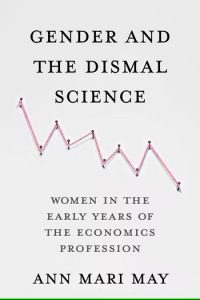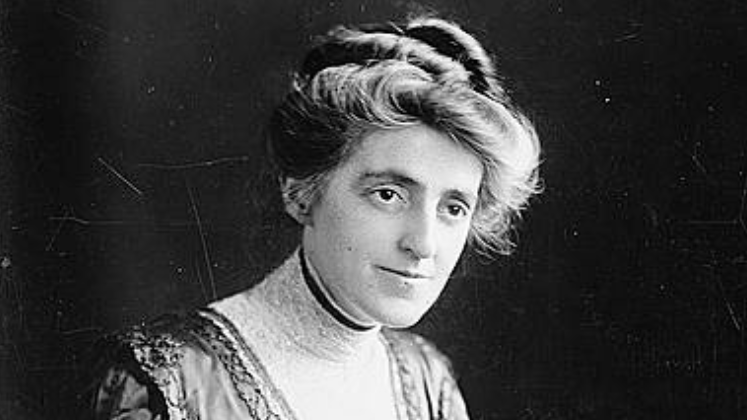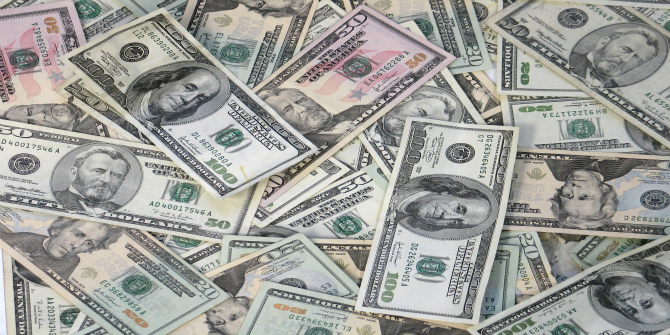In Gender and the Dismal Science: Women in the Early Years of the Economics Profession, Ann Mari May explores the historical roots of gendered inequalities within economics. This is an excellent feminist reading of institutionalised discrimination within the discipline, writes Swetarani Tripathy.
Gender and the Dismal Science: Women in the Early Years of the Economics Profession. Ann Mari May. Columbia University Press. 2022.

As of 2018, only 32 percent of doctorates in economics are women and the participation of women from racial and ethnic minorities remains far lower (2). Compared to their male counterparts, it is less likely for women faculty to attain tenure and promotion to full professorship. Academic papers in economics written by women face delayed publication as they undergo increased scrutiny in the peer review process. Evidence shows the obnoxious environment in which women economists experience sexual harassment and often described in ‘sexual’ terms (8, 170). The lower representation of women in economics also results in skewed public policy debates (10): for example, issues surrounding affordable childcare and the gender wage gap remain unresolved.
As a result, it becomes pertinent to ask how economics evolved as a profession. Where were the women in economics when the boundaries of this ‘noble’ profession were being delineated? Utilising the archives of the American Economic Association (AEA) and publications of the American Economic Review (AER) and Quarterly Economic Journal (QEJ), Ann Mari May, Professor of Economics at the University of Nebraska-Lincoln, draws on empirical evidence to highlight the historical roots of these inequalities. The book shows how unacknowledged gender imbalances have existed in economics since the origins of the ‘dismal science’.
Approaches based on supply-side determinants of women’s participation in academia to a large extent attribute this marginalisation to women’s ‘own calculated decision’ (5). To counter this, May draws from the literature on institutional discrimination and highlights the role of ‘dominant status groups’ in keeping the economics profession exclusive. Professionalisation required fulfillment of certain criteria: graduate training and doctorates, academic affiliation and publications in journals, to name a few. This bestowed the socially dominant group with the autonomy to delineate the boundaries of knowledge creation in economics (11). This prevented women from participating fully in the academic labour market while economists continued to emphasise the virtues of a free market (12).
Women’s admittance into co-educational institutes for graduate training in the late nineteenth century produced widespread resentment. In the US, the Morrill Act of 1862 led to a system of land-grant colleges and universities, after which it became expensive to offer separate institutions for women. Thus, the enrolment of women in co-educational universities was more of an institutional requirement than aimed at correcting gender imbalances. What women faced in these institutions was borderline hostile, be it tougher entrance exams, segregated seating arrangements or the practice of sitting only after all the male students were seated.
The exclusion of women from institutions was driven by the notion of ‘status maintenance’ (23). Women were perceived as ‘intruders’ with the intention of snatching men’s livelihoods. When they entered universities, women were institutionally restricted in their use of resources; gender roles went on to define what courses were ‘suitable’ for them, and they were believed to be analytically and intellectually inferior.

Image Credit: Crop of ‘Sophonisba P. Breckenridge’ (LC-DIG-ggbain-07524 (digital file from original neg.), licensed by Library of Congress, no known copyright restrictions. Sophonisba Preston Breckinridge was the first woman to gain a PhD in political science and economics at the University of Chicago in 1905.
The professionalisation of economics called for experts in the discipline and doctoral degrees became its currency. Only in 1889 did several universities ‘permit’ the admission of women to PhD programmes. Seven Sister colleges (all women colleges) became the flagbearer of imparting graduate training to women in economics, given the cultural backlash they were deemed to face in co-educational institutions.
Professional ties formed in graduate training programmes influenced co-authorship and appointments. Even in co-educational institutions, the opportunity to present research was mainly given to male scholars, hugely affecting women’s capacity to establish professional networks and publish their work. Being located in the same institution as the editor of a journal, the classic case of ‘old boy networks’, was more likely to improve chances of publishing (129). Male faculty also had significantly more resources to assist faculty research, such as reduced teaching loads and access to funding for travel and research equipment. Women who published were mostly associated with Seven Sister institutions and had doctorates in economics; these women were seen as ‘high achievers’ in the discipline (126).
Institutional barriers limited women’s participation in the labour market, even for women with doctorates. Compared to their male counterparts, women with doctorates were much less likely to work in academia and were more likely to end up in government positions. Culturally, it was impressed upon many women that marriage was incompatible with academia. Black women could participate in the labour market even after marriage as it was racially segregated and was not an immediate threat to white men’s livelihood. But black women had limited scope in academia as their entry into universities was restricted, even in the Seven Sister institutions. Furthermore, universities levied marriage bars and anti-nepotism policies. Amidst the Depression of the 1930s, these draconian policies found their way into legislation (143). The Economy Act of 1932 made a gender-neutral statement discharging married persons with government-employed spouses (155). This clause was used to fire women and it had a significant effect on women who sought employment with the federal or state government.
Women with doctorates in economics were therefore more likely to move out of the discipline than men. The rise in ‘home economics’ departments became a sought-after destination. Many scholars saw this as the ‘social reconstruction’ of the nineteenth-century concept of ‘separate spheres’. Gender norms intervened in the outcomes of the labour market, often creating a ‘segregated’ sphere for women in economics.
AEA was at the helm of professionalising economics as it decided the contours of the discipline. The history of women’s membership in AEA is not only about the inability of its officers to recognise the very existence and potential of the ‘other’ sex. It also shows how status-seeking professionals shunned a ‘natural constituency’ who, given their practical knowledge of economics, were more plausible candidates for membership than many of the businessmen approached by AEA.
Through these instances, it can be inferred that the pursuit of the professionalisation of economics interacted with social hierarchy, gender roles and gender-biased institutions like marriage. This resulted in the marginalisation of women when professionalisation was fulfilled. Measures taken by the AEA up until the 1940s to determine who was an economist, and what could be considered knowledge, were all established under male leadership (163). Economics was perceived in a ‘superior’ light compared to other social science disciplines. Economics had to be ‘scientifically’ driven and science was attached to ‘masculine’ traits. Thus, women in economics were perceived as inferior. Women with degrees in economics often found jobs in other disciplines while men without degrees in economics were hired as economics faculty.
Gender and the Dismal Science shows that once men and women were segregated into different entry-level jobs in economics, as they were historically, this ensured continuing gender inequalities in productivity, promotion, opportunities and remuneration. As discrimination still persists in the discipline, May points out the significant role that professional associations like AEA can play in ensuring gender and racial equity. It calls for rigorous and critical examination of practices prevalent in the academic workplace. This book makes for an excellent feminist reading of the evolution of economics, and at the same time, it necessitates further research to understand the persisting inequities in the discipline.
- This review first appeared at LSE Review of Books.
- Banner image credit: Photo by Daniel Lloyd Blunk-Fernández on Unsplash.
- Please read our comments policy before commenting.
- Note: This article gives the views of the author, and not the position of USAPP – American Politics and Policy, nor of the London School of Economics.
- Shortened URL for this post: https://bit.ly/3TvgyAs






